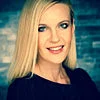How would it be to imagine a world without employees who constitute almost 80% of the overall global workforce?
Since the massive pandemic adversely hit all businesses and employees, it is unforgettable; how frontline workers and other deskless workers put themselves at a higher risk when we all were sitting at home with our families. However, unfortunately, they are still not that blessed workforce who can take advantage of the hybrid work model that facilitates work from any location leveraging various technologies.
So far, discussing deskless workers, let us first clarify what is a deskless workforce in a more definite way,
What are Deskless Workers?
"The non-desk employees are those; who do not have a physical desk to perform their tasks.”
Referring to the above constructive definition of non-desk employees, you might have imagined staff working in hospitals, hotels, manufacturing industries, airlines, etc., and you have thought that right.
Despite; knowing that almost 2.7 billion people in the global workforce are working without desks, studies have found the highest turnover ratios. As per the 2021 report by Nudge, on the turnover of the deskless workforce, it stated 36% of workers want to quit their jobs. Moreover, it has also increased by 38% to 40% for food service workers and facilities management workers, respectively.
At times, when asking the workers why they leave their jobs, many have acclaimed that they are interested in a work that offers them better pay, employee benefits, and work/life balance. However, the most common reason every worker generally has is poor communication and lack of harmony with their respective managers.
Moving forward to finding effective ways to improve the experience of the deskless workforce, we have identified some pain points of deskless employees that they have been facing since before the pandemic and post-COVID-19 pandemic.
Common Challenges of Deskless Workers
A study report of July 2021 by Nudge stated that providing feedback is essential for non-desk workers - mentioned that 67% confirmed that timely feedback is necessary to them; that helps employees feel connected with their employers. At the same time, 39% of workers claimed that their managers were not listening to them. Following; this study, it has been proven that deskless employees want to let their voices be heard.
While Considering the above fact as a challenge for the deskless workforce, there are other challenges too; they face being in the workplace that prevents them from gaining a better experience.
Below are the most common challenges that are faced by deskless employees.
1. Lack of rewards & appreciation
Even after playing a significant role in the total workforce, deskless workers observe a lack of attention from their leaders; yet, they come in direct contact with customers. Not being rewarded as often as when they performed well is the biggest drawback they face in the organization. This adversely affects their motivation, resulting in; them quitting their jobs.
2. Poor coordination between managers and deskless employees
As per the recent research conducted by Ragan, 84% of deskless workers say that they face a lack of direct communication with their supervisors, while only 10?el that they are well connected to their organizations. This fact reveals the current condition of non-desk employees, who believe that working specifically to streamline deskless communication can solve almost all challenges.
3. The inefficiency in scheduling tasks
Most of the time, due to the absence of communication and technology, Workers do not have proper task management from leaders that need to be completed; hence it creates confusion among deskless employees and decreases their productivity.
4. Inadequate training & development
While; examining the study report on the challenges of deskless workers. For example, many researchers have identified that inadequate training and providing valuable resources to employees have failed to perform their tasks effectively.
The above-noted challenges are common for non-desk workers and are likely to be faced by them regardless of their roles.
Overcoming these challenges can be difficult for employers. Many individuals who work in industries like retail and hospitality often suffer from very high turnover rates without using company-wide emails, laptops, or other mobile devices. Therefore, it is critical to ensure that the deskless workforce has fast and easy access to their managers, company policy, and other relevant information to their brand story for making the best choices throughout their workday.
At the time of the Great resignation trend, when the employee attrition ratio was significantly rising all across the globe, managers must not brush off their valuable employees anymore; by prioritizing them, here are nine effective strategies that every business leader should consider to mitigate the challenges of a deskless workforce.
9 Strategies to Improve the Experience of the Deskless Workers
1. Leverage AI-based software specially designed for deskless employees
When we are talking about managing a workforce, it includes many aspects that focus on the overall development of deskless employees, Starting from streamlining communication to engaging them. Unfortunately, a recent study reveals that nearly 60% of companies have little to no flexible technology solutions for their deskless workers, while only 1% of workflow management software focuses on deskless workers.
There are various software available in the market, such as an Applicant tracking system that helps recruiters attract, source, engage, and onboard potential candidates; however, managing and engaging non-desk employees can be trouble once onboarding them into the organization. The AI-driven software today is more data-driven and provides accurate analytics & insights to measure the productivity and performance of deskless employees.
Since it has been designed particularly for deskless workers, its advantage is that it allows you to manage everything that employees can view in the mobile App.
The advanced features include:
- It enables managers and deskless workers to publish, educate and communicate by rapidly publishing important news and training modules that are easily accessible with smartphones.
- A feature like task management makes it easy for managers to quickly assign tasks to individuals, groups, or departments to complete them in real time.
- The feedback tool helps to provide and receive feedback from workers who work in the fields. Managers can effortlessly identify; what exactly workers are feeling; hence this is a great way to build up a better experience for deskless employees, even when working remotely.
- It effectively measures employee engagement & satisfaction.
- Instant messaging allows sending or receiving messages, just like a normal messaging tool on smartphones.
- The software intelligence provides leaders with actionable insights that support them in tracking & measuring every activity performed by non-desk employees.
2. Uplift managers to engage & retain deskless employees
Since the data published in the 2021 report by Nudge, workers said that they constantly look for progression in terms of career, while 55% agreed that managers' proper engagement & motivational tactics help create a sense of purpose in the workplace. As a leader managing a deskless workforce, one must plan a strategy that involves a maximum number of employees who can build up a better community that enables them to work together towards the same goal.
3. A sense of belonging is vital
More than 50% of deskless employees believe their employers consider them as temporary workers and make them feel excluded. The only reason for this challenge is inadequate communication with their deskless workers, which results in disconnection. However, a sense of belonging through employee connection is vital. So far, it helps build a positive culture where employees work as per the organization’s shared mission, vision, and values.
4. Extend flexible working
“Take care of your manpower, and they will take care of your business” By saying this, the big struggle employers still face is to schedule deskless employees in different work shifts effectively. Scheduling workers is significant since the manager must be careful that no workers are getting overburdened with extra shifts. If that happens, then it is likely to affect productivity adversely.
As per the research, approx, 40% of employers committed to a lack of flexibility in workers’ schedules. There can be abrupt circumstances in anyone’s life; hence extending flexibility in workers' schedules plays a significant role in making them feel better.
5. Communication solutions for deskless workers
Most employers' decisions for investment in innovations are based on identifying and analyzing the challenges for their workers. So, two-way deskless communication is the only key that opens the door for deskless workers. Where they can quickly provide & receive feedback and share new ideas with their leaders. In addition, adopting the latest user-friendly technologies can make it possible to mitigate obstacles to streamlining communication.
6. Provide sustainable benefits to deskless employees
The pandemic has changed the overall scenario of organizations in terms of entire human resource management, and now it’s time for employers to re-evaluate the perks and benefits of employees. Since deskless employees or workers are engaged in many different sectors such as health care, hospitality, factories, facility management, and retailing. Compared to desk-bound employees, deskless workers need some extra benefits that focus more on their well-being.
Benefits such as; offering them life Insurance, financial benefits, flexible working, providing the necessary tools & equipment, arranging mental wellness programs, offering additional benefits to the front-liners as well as workers who work in hazardous chemical factories where taking care of their safety & security is a big responsibility of the employer.
7. Enable consistent Training & development opportunities
When we are talking about 2.7 billion workforces of the total global workforce, most of them deal with customers directly. Unfortunately, though, somewhere, more emphasis has been given to desk-bound employees regarding training & development, while hospitality training courses often don't receive the attention they deserve.
The workers will likely mislead them if their supervisors have not provided them with adequate training. Therefore, training & development is essential for deskless workers. It needs to be continuous since it supports the organization to achieve its goals. The best way to enable consistent training is by installing technology that can be accessed easily with smartphones.
8. Enhance the scope of a career by offering further education
For deskless workers, especially those looking to grow in their career paths, HR must allow them to provide upskilling education opportunities. Offering this to potential employees can also benefit organizations in the long run.
9. Improve smartphone experiences
Facilitating employees with tools & technology that are mobile-friendly is the most convenient for workers who have no physical desks. In addition, smartphone-friendly software is an effective way to manage employees Who are located in remote areas; adopting this as a solution can reduce burnout of employees and improve their experience; which will ultimately work as a strategy to engage and retain them effectively.
Key Takeaways
“Your manpower is not your machine,” realizing that; your employees are socially connected and have multiple social responsibilities that need to be fulfilled irrespective of their essential role in the organization.
There is no limit to learning and adopting good things that others implement for the betterment; through this, an employer or manager can gain key takeaways from well-known brands that manage their deskless employees all across the globe.
“We built our Starbucks brand first with our people and then with customers.” said the chairman of Starbucks, expressing how they value their employees. We can always take inspiring learning lessons from the best brands globally that have successfully set the benchmarks. There is also great learning from the famous brand Mcdonald's, which provides worldwide food service. They effectively manage their deskless workforce, who rarely sit at a desk and usually have no real physical space.
FAQs - Frequently Asked Questions
Who are considered deskless workers?
Deskless workers are employees who do not have a fixed physical desk to perform their tasks. They often work in industries such as healthcare, hospitality, manufacturing, and retail, and form a significant part of the global workforce.
What challenges do deskless workers commonly face?
Deskless workers often experience poor communication with managers, lack of recognition, inefficient task scheduling, and limited training opportunities. Addressing these issues can improve their work experience and reduce turnover.
How can technology like AI-based software help deskless employees?
AI-driven software designed for deskless workers can streamline communication, assign tasks efficiently, provide real-time feedback, and offer insights into performance. Such technology improves engagement and productivity significantly.
Why is a sense of belonging important for deskless workers?
A sense of belonging helps deskless employees feel valued and connected to their organisation’s mission and culture. This reduces feelings of exclusion and increases motivation and job satisfaction.














.webp)


